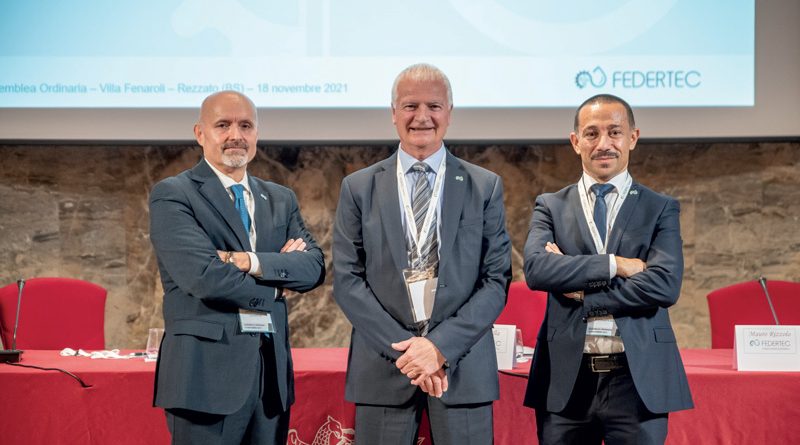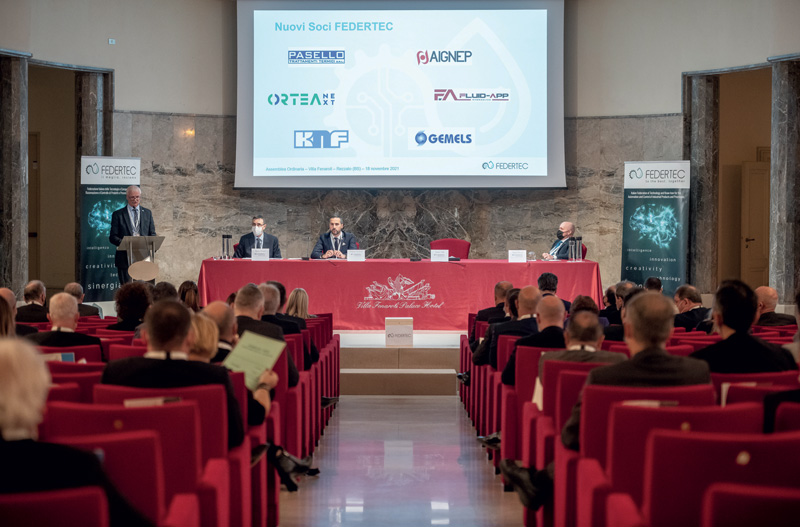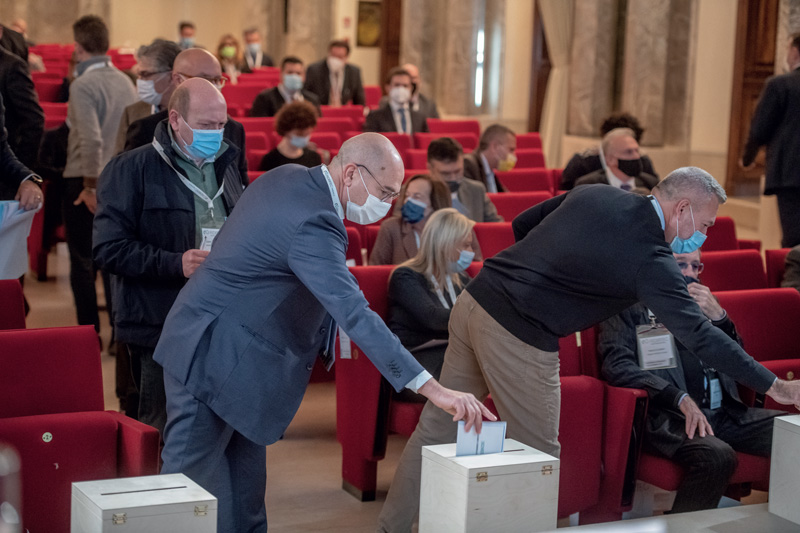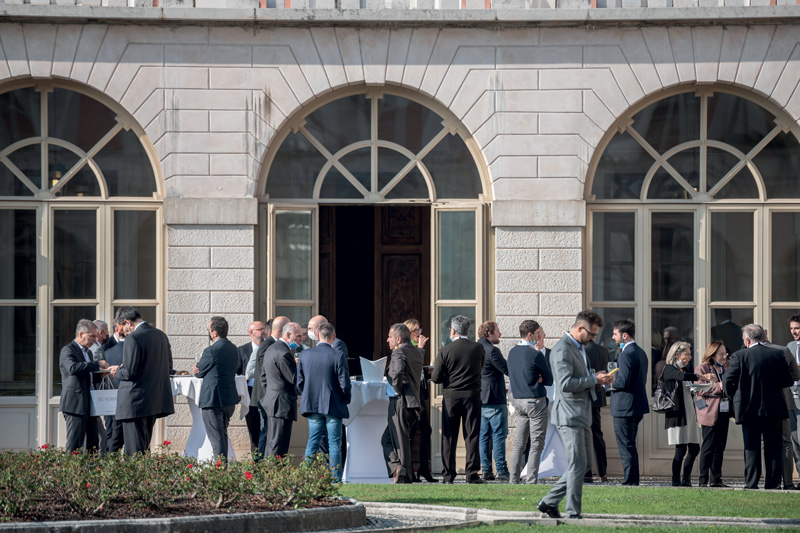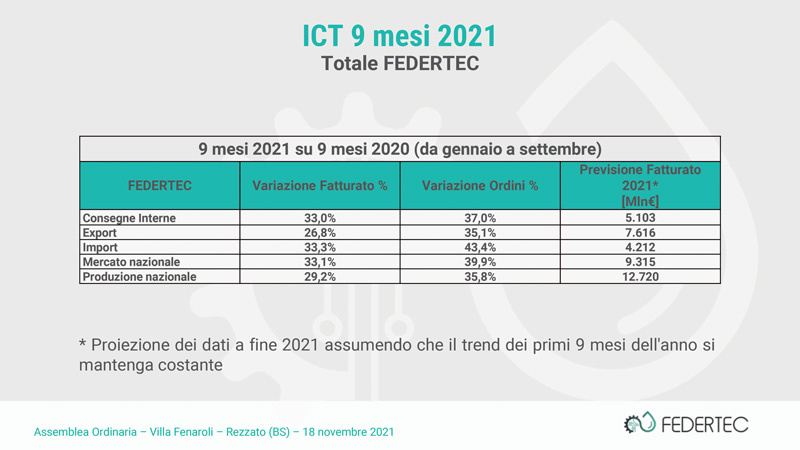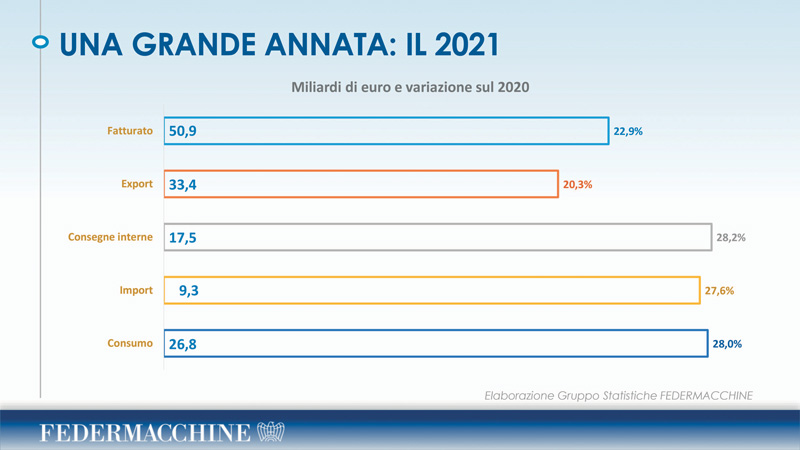From group to team: an increasingly strong association
The focus of the FEDERTEC Assembly on November 18th, preceded by the ASSIOT and ASSOFLUID Assemblies, was once again the need for change, in line with the evolution of the market. Among the challenges our companies are called to face and win in order to remain competitive, digitisation, supported by new technologies, is certainly a priority, but it must be accompanied by an increasingly convinced commitment to sustainable production. To achieve these objectives, teamwork is essential and the role of the association is decisive.
On November 18th, in the beautiful setting of Villa Fenaroli in Rezzato (near Brescia), the FEDERTEC General Assembly was held, preceded by the ASSIOT and ASSOFLUID Assemblies. The agenda also included the renewal of ASSIOT and ASSOFLUID social offices: Mauro Rizzolo (Schaeffler Italia) was reconfirmed as president of ASSIOT, with Elisa Brescianini (Link International) and Lorenzo Cattini (Cattini e Figlio) as vice-presidents, while Luca Riva (Duplomatic MS) was appointed as new president of ASSOFLUID, after the expiry of Domenico DiMonte’s second mandate, and will be assisted by Gabriele Manno (Festo) and Tommaso Tirelli (Aidro) as vice-presidents. The representatives of the two associations at FEDERTEC were also appointed: Lorenzo Cattini as ASSIOT representative and Angelo Colombo (Elettrotec) as ASSOFLUID representative. Fausto Villa, President of FEDERTEC, Mauro Rizzolo and Luca Riva will remain in office until 2023.
Teamwork is giving excellent results
Since the official birth of the Federation, the amount of work carried out has been truly outstanding: teamwork has given and continues to give excellent results. This was emphasised by Domenico DiMonte: the outgoing president of ASSOFLUID retraced the stages of FEDERTEC’s journey, based on an extended vision in the medium and long term, scalable and supported by decisions in line with the evolution of the market. “All of this,” he said, “thanks to a strategic organisation which has seen the transition from a ‘group’ to a ‘team’ becoming excellent over time”. The aspect of continuity was also stressed by Mauro Rizzolo, President of ASSIOT. “Continuity and future are the two terms with which I began my report at the last FEDERTEC Assembly last autumn. “Continuity” because ASSIOT represents an important sector of the Italian economy: with a national production exceeding 8 billion euros and a national market exceeding 7 billion, we are definitely talking about important numbers”. But are these numbers known and acknowledged at national level? This is where the association’s role becomes fundamental for its representation on the national scene. Looking to the future is equally important. “It is a different future compared to what we were used to considering,” Rizzolo said. A future where business continuity and digitisation (with the support of new technologies), just like data and the sustainability of production itself, will be fundamental aspects. A complex future where, once again, the role of the association is decisive, but each member company must be personally involved by offering concrete collaboration”. Italian industry is experiencing an important moment of recovery and the sectors represented by FEDERTEC are no exception. All indicators are positive and the projections for 2021, based on the results of the economic survey of the first 9 months of 2021, lead to an overall turnover of the Mechanical Power Transmissions and Fluid Power macro sector of more than € 12.5 billion. “A promising scenario – Fausto Villa, President of FEDERTEC, said – which however requires some reflections. The market is going through a phase of profound imbalance, marked by a strong growth in demand and a supply undergoing very strong price increases, the continuous rise in the price of raw materials and the lack of availability is unparalleled in any other period in history, and this, linked to the lack of electronic components, puts the production systems of companies and the entire global manufacturing system in serious difficulty”. The moment for the 4.0 transition is favourable, thanks to a convergence of factors, from growth to the policy of incentives. As we write, the Budget Law has not yet been approved, but there are certainly some fears regarding industrial policies and, in particular, the PNRR which will fund the Transition 4.0 plan. Mr Villa also spoke at length about electrification, about the opportunities, but also about the criticalities linked to its diffusion, about reducing CO2 emissions and the importance of producing in as sustainable a way as possible. “The mechanical engineering sector has always been a fundamental asset for our economy,” Villa continued, “and our companies are internationally renowned for their uniqueness. The manufacturing sector is one of the most important on the global industrial scene, and today all the companies in the chain are called upon to reinvent a path of sustainable growth. At this point, adequate industrial policies are needed, as well as support for investment in terms of technological innovation, staff training, digitisation…”.
The activity of the Commissions has resumed at a brisk pace after the lockdown
We mentioned the important teamwork that has been carried out over the years. One example is the work of the various Commissions. Let us go into greater detail. The Globalization and Networking Commission dealt with B2B meetings, the agreement with Easy Frontier … and partnerships with universities and technology parks. The activity of the Technology & Innovation Commission is also always lively: no less than 19 courses were organised in 2021 and 140 participants.The activities of the Working Groups of the Club of Technical Directors coordinated by Mr. Sartori were also planned: several projects on topical issues such as industrial contamination, Additive Manufacturing and the Drawingless Model Based Definition approach are in the pipeline. The Economic Commission undertook to standardise the collection of data, a task which had been called for and announced some time ago, for the Quarterly Joint Survey for the Fluid Power and Mechanical Power Transmission sectors. Besides, it will continue to deal with international data reports (CETOP, EUROTRANS) and the reports of the industry Associations, as well as organising the traditional Economic Day. Finally, the Marketing & Communication Commission is planning to publish the FEDERTEC Directory for 2022/2023. The membership campaign has brought no less than 14 new companies to join FEDERTEC since January 2021: a great success.
The project of a merger with FNDI: first example of an ‘open’ federation
As a demonstration of the importance of evolving and expanding the team, the project for a merger with FNDI (Federazione Nazionale Distribuzione Industriale – National Federation of Industrial Distribution) is the result of a vision announced at the Federation’s foundation: that of incorporating specific associations representing the supply chain, now also known as the ‘ecosystem’ of mechatronic technologies. The advantages? An increase in the membership base, turnover and number of employees; greater representation and visibility both nationally and internationally, and greater synergy between associations and companies in FEDERTEC.
What about the technological challenges and prospects for the Italian industry?
The public meeting, which took place in the afternoon, saw experts from the sector discuss the challenges of the market and the technological prospects for Italian industry at a Round table. Speakers included Giuseppe Lesce, President of FEDERMACCHINE, Ciro Rapacciuolo, CONFINDUSTRIA Research Centre, Marco Taisch, Full Professor of Management Engineering at the Milan Polytechnic, Mariangela Tosoni, President of FNDI and FEDERTEC President Fausto Villa. The President of FEDERMACCHINE confirms the positive signals for the Italian economy and fully shares the cruciality of the team concept expressed by Fausto Villa: he announces rising values for GDP, Private Consumption, Investments, Exports and Imports. The recovery of foreign trade shows double-digit growth rates… A positive scenario, therefore, which however demands some reflections: first of all, the problems linked to the supply chain, especially in the components field, which have repercussions on deliveries, as well as the uncertainties linked to the management of PNRR funds. “For the capital goods sector, a “great year” is expected,” Lesce commented, “with a 22.9% increase in turnover: catching up with 2019 levels. However, orders are running more than turnover precisely because of the aforementioned problems”.
Ciro Rapacciuolo gave a wide-ranging overview, encompassing the world economy. While US GDP has already recovered to pre-crisis levels in the second quarter of 2021, the Eurozone is still slightly below its pre-crisis level, but the annual growth profile has been revised upwards. Good prospects for emerging countries, driven by China and India, despite some uncertainty represented by China’s own financial fragility. And what about Italy? In our country only investments have exceeded the pre-pandemic level. The Italian economy returned to growth in the first two quarters of 2021 thanks to the gradual easing of the restrictive measures adopted to contain the spread of the virus. The recovery is driven by investments, thanks mainly to the contribution of construction (-26.7% in June 2020 compared to pre-crisis levels, +12.8% in June 2021). Consumption is replacing exports as the driving force behind the recovery, alongside investments. Italian exports are also showing a strong upswing, with goods already above their pre-crisis level, while services will have to wait until 2022. Marco Taisch’s speech on digitisation, defined as “a mandatory process, a pre-requisite for entering the competitive scenario”, is a comprehensive overview: smart factories, digital technologies, but also socio-environmental megatrends. What characteristics should the products of the future have? They will have to be smart, connected, personalised and green,” Taisch said, “and they will have to incorporate a certain amount of digitisation if they are to be truly sustainable”. Taisch also addressed the evolution of the concept of servitisation, which has seen a shift from the product, to the service supporting the product, to the service differentiating the product, to the service as product: the service becomes, to all intents and purposes, the product.

